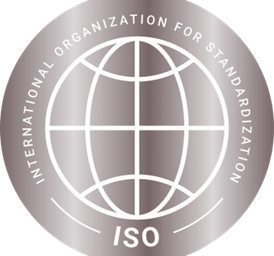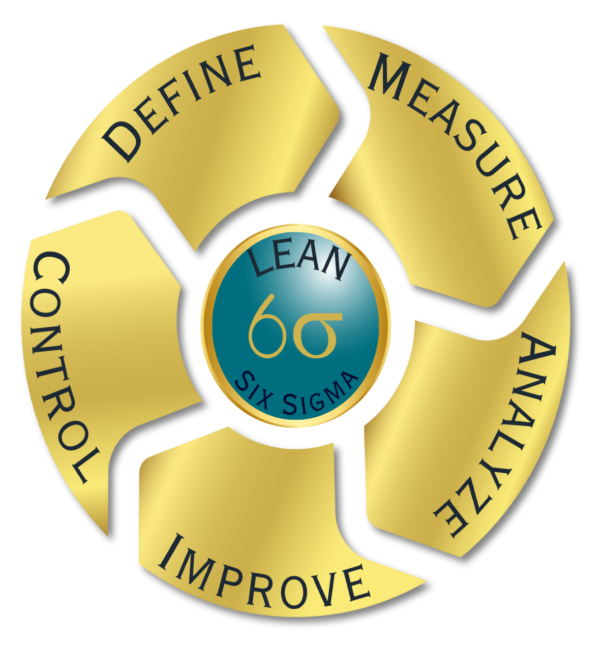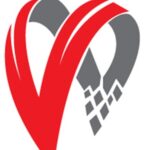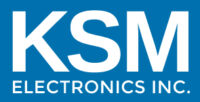ISO Accreditation

The Appleton Greene Corporate Training Program (CTP) for ISO Accreditation is provided by Dr. Borland Certified Learning Provider (CLP). Program Specifications: Monthly cost USD$2,500.00; Monthly Workshops 6 hours; Monthly Support 4 hours; Program Duration 12 months; Program orders subject to ongoing availability.

Personal Profile
Dr. Borland is a Certified Learning Provider (CLP) with Appleton Greene. She is a distinguished professional whose 30-year career has positioned her as a respected thought leader and influencer in the realms of quality, social work, and education. With a Doctor of Social Work degree from the University of Southern California (USC), an MBA from Florida International University (FIU), and BA in Psychology from Barry University, her diverse educational background augments her roles as a tech founder, quality engineer and auditor, educator, corporate trainer, author and writer.
As a tech founder, she created a groundbreaking app to mitigate losses in last-mile delivery. She also founded a Social-Emotional Learning (SEL) journaling platform that includes programs utilized in schools across the United States, making a significant impact in the educational landscape. Her innovative approach to SEL has been instrumental in promoting emotional intelligence and well-being among students.
With a wealth of experience spanning various industries, Dr. Borland’s expertise extends beyond academia. She has demonstrated exceptional leadership skills in driving organizational transformations through quality management in dynamic and competitive environments. Known for her ability to garner trust and collaboration across all levels, she has successfully led ISO accreditation readiness through restructuring and formalizing initiatives with a keen focus on sustainable growth and employee engagement.
In addition to her professional achievements, Dr. Borland holds a reputation as an influential figure in the field of social work and education. Her platform illustrates her commitment to empowering and elevating the contributions of fathers through innovative programs and initiatives which underscores her passion for making a lasting impact on society. A dedicated leader at both personal and team levels, she has cultivated effective senior teams and boards, fostering environments conducive to continuous learning and development.
Dr. Borland is known for her philanthropic efforts, supporting causes related to education, mental health, and social justice. She has served on the board of directors for numerous charities and service organizations including Family Central, Convent of Mercy Academy Alumnae Association, and is a Distinguished President of the Kiwanis Club of Sawgrass Sunrise. As a passionate advocate for equity and inclusion, she works tirelessly to create opportunities for underserved communities and promote diversity in all aspects of society.
Her work has been featured in numerous publications, conferences, and media outlets, where she shares her insights on topics ranging from emotional intelligence and leadership to organizational development and educational innovation. She is the host of Gladverse TV where she interviews people who have experienced adversity through a positive mindset. Her ability to connect with audiences across diverse platforms has solidified her reputation as a thought leader with a unique perspective on the intersection of academia, quality, and social impact.
Throughout her multifaceted career and unwavering commitment to positive change, Dr. Laura Borland continues to inspire and empower individuals to reach their full potential and contribute meaningfully to the world around them. Her vision for a more compassionate, equitable, and innovative future drives her work and serves as a guiding principle in all that she does.
To request further information about Dr. Borland through Appleton Greene, please Click Here.
(CLP) Programs
Appleton Greene corporate training programs are all process-driven. They are used as vehicles to implement tangible business processes within clients’ organizations, together with training, support and facilitation during the use of these processes. Corporate training programs are therefore implemented over a sustainable period of time, that is to say, between 1 year (incorporating 12 monthly workshops), and 4 years (incorporating 48 monthly workshops). Your program information guide will specify how long each program takes to complete. Each monthly workshop takes 6 hours to implement and can be undertaken either on the client’s premises, an Appleton Greene serviced office, or online via the internet. This enables clients to implement each part of their business process, before moving onto the next stage of the program and enables employees to plan their study time around their current work commitments. The result is far greater program benefit, over a more sustainable period of time and a significantly improved return on investment.
Appleton Greene uses standard and bespoke corporate training programs as vessels to transfer business process improvement knowledge into the heart of our clients’ organizations. Each individual program focuses upon the implementation of a specific business process, which enables clients to easily quantify their return on investment. There are hundreds of established Appleton Greene corporate training products now available to clients within customer services, e-business, finance, globalization, human resources, information technology, legal, management, marketing and production. It does not matter whether a client’s employees are located within one office, or an unlimited number of international offices, we can still bring them together to learn and implement specific business processes collectively. Our approach to global localization enables us to provide clients with a truly international service with that all important personal touch. Appleton Greene corporate training programs can be provided virtually or locally and they are all unique in that they individually focus upon a specific business function. All (CLP) programs are implemented over a sustainable period of time, usually between 1-4 years, incorporating 12-48 monthly workshops and professional support is consistently provided during this time by qualified learning providers and where appropriate, by Accredited Consultants.
Executive summary
ISO Accreditation
ISO Accreditation is a 1-year course designed to provide participants with comprehensive knowledge and practical skills to excel in implementing and managing ISO standards and successfully pass ISO certification by building a solid Quality Management System (QMS) in various industries. This exciting and intensive program aims to empower and equip participants with the necessary expertise to ensure compliance and drive continuous improvement within their organizations. Consisting of 12 strategically designed modules, each provides a natural and intuitive progression towards sound QMS development, with interactive activities, case studies, and assessments to reinforce learning and ensure practical application.
ISO Accreditation requires a company-wide commitment and recognizes the crucial role that employee engagement and training play in achieving ISO certification. Throughout the course, participants will learn about the significance of employee involvement in the implementation of a Quality Management System (QMS). They will gain insights into how to effectively communicate the objectives and benefits of ISO certification to employees, helping to generate enthusiasm and commitment. With dedicated modules for employee training and competency development, participants will learn best practices for designing and delivering effective training programs that align with ISO standards and requirements, while simultaneously providing guidance on assessing and verifying employee competence, ensuring that employees have the necessary knowledge and skills to contribute to the successful implementation and maintenance of a QMS. This program helps organizations create a culture of quality and continuous improvement by empowering employees to actively participate in the ISO certification process, resulting in a more effective QMS and improved chances of successful certification, reinforced by using Lean Six Sigma methodology and Kaizen theory to ensure best practices adherence.
By integrating Lean Six Sigma principles and Kaizen methodologies into each module, organizations can effectively meet the program objectives of the ISO Preparation and enhance their chances of successfully acing an ISO certification course. These approaches foster a systematic and structured approach to quality management, risk mitigation, and continuous improvement, which are essential elements of ISO certification. For instance, Lean Six Sigma’s methodology combines lean principles aimed at eliminating waste with Six Sigma quality control techniques. It emphasizes improving efficiency, reducing defects, and enhancing customer satisfaction. Applying Lean Six Sigma principles can help streamline processes, improve product or service quality, and meet ISO certification requirements. While the theory of Kaizen promotes continuous improvement through small, incremental changes that involves empowering employees to contribute ideas for process improvement and fosters a culture of ongoing enhancement.
Implementing Kaizen principles can lead to sustained improvement and compliance with ISO standards. Both are complementary and non-competing approaches to building a solid QMS.

Why ISO Accreditation is so Important
ISO accreditation helps address and solves these common challenges within companies:
1. Inefficiency and Lack of Standardized Processes: Organizations often face challenges in maintaining consistent and efficient processes across different departments or locations. ISO accreditation provides a framework for implementing standardized processes, ensuring consistency and efficiency throughout the organization. This can lead to improved operational efficiency, reduced waste, and better resource utilization.
2. Poor Risk Management: Organizations sometimes struggle with identifying and managing risks effectively. ISO standards emphasize risk-based thinking, which helps organizations identify potential risks and develop strategies to mitigate them. ISO accreditation enables organizations to establish robust risk management systems, enhancing their ability to prevent or minimize the impact of risks.
3. Compliance Issues: Meeting regulatory requirements and industry-specific guidelines can be a complex task. ISO accreditation ensures that organizations adhere to relevant regulations and industry best practices, reducing compliance risks and potential legal issues. This can provide organizations with a competitive advantage and peace of mind knowing that they are meeting all necessary compliance standards.
4. Inconsistent Quality Control: Many organizations struggle with maintaining quality control over their products or services. ISO standards emphasize quality management systems, providing organizations with tools and processes to monitor and improve quality. By obtaining ISO certification, organizations can enhance customer satisfaction, achieve product/service consistency, and demonstrate a commitment to providing high-quality offerings.
5. Limited Market Access: Some markets require ISO accreditation as a prerequisite for doing business. Without this accreditation, organizations may face barriers to entry or restricted market access. By obtaining ISO certification, organizations can expand their market reach, access new opportunities, and gain a competitive edge over non-accredited competitors.

Modules for Year 1
ISO external audit certifications dates back to the establishment of the International Organization for Standardization (ISO) in 1947. The ISO is an independent, non- governmental organization that develops and publishes international standards to ensure quality, safety, and efficiency in various industries and sectors worldwide. The first ISO standard, ISO 9000, was published in 1987, focusing on quality management systems.
This standard laid the foundation for ISO external audit certifications by providing organizations with a framework to demonstrate their commitment to quality and customer satisfaction. Over the years, ISO has developed numerous standards covering various aspects such as environmental management (ISO 14001), information security (ISO 27001), and occupational health and safety (ISO 45001). ISO external audit certifications gained popularity due to their ability to provide credibility and assurance to stakeholders, including customers, partners, and regulatory bodies.
These certifications serve as evidence that an organization operates in accordance with international best practices, ensuring consistent quality, environmental sustainability, and data security.
Currently, ISO external audit certifications are widely recognized and sought after by organizations across industries. These certifications signify a company’s dedication to excellence, compliance, and continuous improvement. There are some key aspects of the current position of ISO external audit certifications including global adoption as ISO standards have been adopted by companies of all sizes and sectors worldwide, making ISO external audit certifications globally recognized creating equity for businesses, by enabling them to compete on a global scale and meet the expectations of international clients.
ISO certifications play a crucial role in helping organizations comply with regulatory requirements. Many industries have specific regulations that mandate adherence to certain ISO standards. By obtaining ISO certification, companies demonstrate their commitment to meeting these regulatory standards and mitigating risks associated with non-compliance and instill trust and confidence in customers, as they indicate that a company has implemented robust quality management systems and adheres to internationally recognized standards.
This enhances customer satisfaction, strengthens relationships, and can lead to increased business opportunities. Continuous Improvement is the hallmark of ISO certifications as it encourage organizations to constantly evaluate and improve their processes. The PDCA (Plan-Do-Check-Act) cycle mentioned earlier is a core principle of ISO standards and promotes a culture of continuous improvement. By following this cycle, organizations can identify areas for enhancement, implement corrective measures, and drive ongoing improvement in their operations.
Curriculum
ISO Accreditation – Part 1- Year 1
- Part 1 Month 1 ISO Standards
- Part 1 Month 2 GAP Analysis
- Part 1 Month 3 Top Management
- Part 1 Month 4 Organizational Onboarding
- Part 1 Month 5 Damage Mitigation
- Part 1 Month 6 Custom Fit
- Part 1 Month 7 Quality Checkup
- Part 1 Month 8 Operational Audit
- Part 1 Month 9 Poka-Yoke
- Part 1 Month 10 Supplier Selection
- Part 1 Month 11 Internal Audit
- Part 1 Month 12 Quality Kanban
Program Objectives
The following list represents the Key Program Objectives (KPO) for the Appleton Greene ISO Accreditation corporate training program.
ISO Accreditation – Part 1- Year 1
- Part 1 Month 1 ISO Standards – This introductory module provides participants with a comprehensive understanding of ISO standards where they will learn about the history and purpose of ISO, as well as the benefits of implementing ISO standards and a QMS within an organization. It aims to familiarize them with the fundamental principles and concepts of ISO certification and how it relates to their organization and help improve overall performance and efficiency. Throughout this module, the focus will be on introducing the key ISO standards, such as ISO 9001 for quality management systems, and explaining their relevance in different industries. Participants will explore the requirements and criteria for ISO certification and understand the importance of aligning their organization’s processes and procedures to meet those standards. By the end of this module, participants will have a clear understanding of the foundation of ISO standards and QMS. They will be able to identify the areas within their organization that need improvement by integrating Lean Six Sigma principles focusing on continuous improvement and risk mitigation. Through the use of tools like SIPOC and flowcharts for process mapping, participants will be guided to understand and document the current processes and conducting preliminary gap analyses which will assist with identifying gaps and improvement opportunities. Utilizing the Kaizen approach of PDCA (Plan-Do-Check- Act) cycle to continuously improve processes to ensure compliance with ISO standards augments the activities performed and sets a strong framework for future modules.
- Part 1 Month 2 GAP Analysis – The objective of this module is to equip participants with the skills and knowledge to effectively identify and address any shortcomings in their organization’s quality management system. Its primary aim is to help participants conduct an in-depth, thorough gap analysis of their organization’s current quality management system in relation to ISO standards.
Attendees will learn how to identify gaps and areas for improvement by comparing their existing practices and processes with the requirements outlined in ISO standards while gaining insights on how to prioritize actions to address identified voids. Using Lean Six Sigma tools such as root cause analysis with fishbone diagrams and “5 Whys” to identify the underlying causes of the identified gaps and issues and DMAIC (Define, Measure, Analyze, Improve, Control) to systematically address the identified gaps and improve processes. Then utilizing Kaizen methodologies to close those gaps effectively by conducting Gemba walks and value stream mapping to identify gaps between current and desired states and develop improvement plans. - Part 1 Month 3 Top Management – The emphasis of this module is to highlight the crucial role of top management in implementing and maintaining a quality management system based on ISO standards. Participants will learn about the responsibilities and leadership qualities required from top management in driving a culture of quality and continuous improvement. They will explore strategies for effective communication, goal setting, and resource allocation to ensure the success of the quality management system. By the end of this module, Lean Six Sigma principles will be incorporated and endorsed to empower top management in driving quality initiatives, while promoting a culture of continuous improvement using Kaizen methodologies. Several tools and techniques from Lean Six Sigma will be leveraged that can be applied to engage top management and promote leadership involvement in ISO standards. Some of these tools and techniques include: Voice of the Customer (VOC) analysis to identify customer needs and expectations related to quality and ISO standards, process mapping, stakeholder analysis, performance metrics, and daily management systems. By conducting VOC analysis, top management can better understand customer requirements and make informed decisions to drive quality initiatives. Process mapping provides a visual representation of the steps involved in a process. By mapping out current processes related to ISO standards and quality initiatives, top management can identify inefficiencies, bottlenecks, and areas for improvement. Stakeholder analysis helps identify key stakeholders who are involved or impacted by ISO standards and quality initiatives to ensure that Top management can then engage with these stakeholders to gain their support, address their concerns, and ensure their involvement in driving quality initiatives. Performance metrics in Lean Six Sigma emphasizes the use of data and metrics to measure process performance. By establishing key performance indicators (KPIs) related to ISO standards and quality initiatives, top management can track progress, identify areas needing improvement, and make data-driven decisions to drive quality improvements. And lastly, daily management systems tool involves implementing structured daily management routines to monitor and improve processes so that top management can stay informed about progress, address issues promptly, and provide leadership support. Along with implementing the Kaizen approach of Hoshin Kanri to engage top management in setting goals, providing resources, and driving quality initiatives, these tools and techniques can engage top management in driving quality initiatives, promote leadership involvement in ISO standards, and ensure continuous improvement in organizations.
- Part 1 Month 4 Ornagizational Onboarding – This module’s focus is on guiding participants through the process of onboarding their organization to the ISO standards. Participants will learn how to effectively communicate and engage employees at all levels in the implementation of the quality management system. They will gain insights on change management strategies to overcome resistance and ensure a smooth transition to ISO standards. The objective of this module is to equip participants with the skills and knowledge to successfully onboard their organization to the ISO standards and garner employee support. Organizational onboarding is achieved by integrating Lean Six Sigma techniques by ensuring new employees understand quality expectations by providing training and workshops to ensure all employees understand the importance of ISO standards and their roles in compliance and applying change management techniques to facilitate smooth transitions during the onboarding process and address resistance to change. Utilizing standard work procedures and visual management tools to ensure new employees understand and adhere to ISO standards are encouraged as a means to contribute ideas for improvement through Kaizen principles.
- Part 1 Month 5 Damage Mitigation – The objective of this module is to train participants in mitigating potential damages that may occur during the implementation of ISO standards. Attendees will learn how to identify and address risks and challenges that may arise, such as disruptions in operations or resistance from employees. They will explore strategies for proactive risk management and develop contingency plans to minimize the impact of potential damages. The topic of risk management within an organization is also reviewed as participants will learn about different risk assessment techniques and tools, as well as how to develop and implement risk mitigation strategies. They will also gain an understanding of the importance of proactive risk monitoring and continuous improvement in order to prevent and minimize potential risks. By the end of this module, participants will be equipped with the skills to effectively navigate any challenges that may arise during the ISO implementation process. Damage mitigation is achieved through the deployment of Six Sigma strategies that prevent defects and reduce waste like FMEA (Failure Mode and Effects Analysis) to identify potential risks and develop mitigation strategies, and corrective and preventive actions to address identified risks and prevent future occurrences of non-conformities. While Kaizen methodologies to encourage employees to suggest small, incremental changes that enhance damage mitigation efforts are adopted.
- Part 1 Month 6 Custom Fit – In this module, the focus is on helping participants tailor the ISO standards to suit their organization’s unique needs and requirements. Participants will learn how to customize and adapt the ISO requirements to fit their organization’s industry, size, and specific quality objectives. They will gain insights on how to effectively document and communicate these customizations within their organization. The overarching goal of this module is to empower participants to customize the ISO standards in a way that aligns with their organization’s culture, goals, and operational requirements. Implementing Lean Six Sigma principles to tailor ISO requirements to specific organizational needs, through process customization and continuous improvement optimize processes for better efficiency and effectiveness. While applying Kaizen events and kaizen blitzes to analyze and modify existing processes to better align with ISO standards and requirements continuously ensures the development of a QMS that is synergistic with the organization’s personality.
- Part 1 Month 7 Quality Checkup – Participants will develop a comprehensive understanding of the importance of ongoing monitoring and evaluation of their organization’s quality management system. Participants will learn how to design and implement effective quality checkup processes to ensure compliance with ISO standards. They will explore various tools and techniques for measuring and assessing the performance of their quality management system, including key performance indicators and audits. The objective of this module is to enable participants to establish a robust quality process to continuously improve their organization’s QMS. Quality checkups and timely check-ins require the use of Lean Six Sigma tools for data analysis and process improvement to ensure consistency when conducting periodic internal audits and statistical process control through control charts and statistical techniques to monitor and maintain process performance within acceptable limits. Kaizen methodologies also relies on utilizing checklists, standard operating procedures, and visual controls to systematically assess compliance with ISO standards and identify opportunities for improvement.
- Part 1 Month 8 Operational Audit – Module 8’s goal is to equip participants with the skills and knowledge to conduct operational audits to assess the effectiveness of their organization’s quality management system. Participants will learn how to plan and execute audits, collect and analyze data, and report audit findings. They will gain insights on conducting internal audits as well as managing external audits conducted by certification bodies. By the end of this module, participants will be prepared to effectively audit their organization’s QMS and ensure compliance with ISO standards. Performing an operational audit requires incorporating Lean Six Sigma practices to conduct thorough audits including external audit preparation and experiencing the process and relying on performance metrics and data to measure operational performance and drive improvements based on audit findings. Coupled with implementing Kaizen principles to make incremental changes that enhance operations while using standardized audit templates and checklists to evaluate operational compliance with ISO standards. and provides structure to the QMS.
- Part 1 Month 9 Poka-Yoke – Poka-Yoke, which refers to the concept of mistake-proofing or error prevention techniques is the focus of this module. The objective is to train participants in implementing Poka-Yoke strategies within their organization to prevent errors and minimize defects. Participants will learn about different types of Poka-Yoke devices and techniques, as well as how to identify and implement appropriate solutions for their organization. Lean Six Sigma techniques for implementing error-proofing measures such as error-proofing and standardized work instructions and procedures are utilized to reduce variability and human error. Employees are encouraged to suggest Kaizen-based improvements to enhance error prevention like visual controls to prevent errors and ensure adherence to ISO standards. By the end of this module, participants will be equipped with the knowledge and skills to comfortably apply Poka-Yoke principles to improve the reliability and quality of their processes.
- Part 1 Month 10 Supplier Selection – It is imperative for participants to understand the importance of supplier selection and management in maintaining a high-quality supply chain and that is the focus of this module. Participants will learn about criteria and strategies for evaluating and selecting suppliers, as well as techniques for effectively managing supplier relationships. They will also gain insights on how to assess supplier performance and ensure compliance with quality standards. Applying Lean Six Sigma principles to evaluate and select suppliers based on predefined quality criteria, criteria and use tools like supplier scorecards to assess and select suppliers based on their ability to meet ISO standards and quality requirements. Once selected, supplier management processes are implemented to monitor and improve supplier performance, ensuring they continuously comply with ISO standards. Kaizen methodologies to streamline supplier management processes, through supplier scorecards and performance metrics to evaluate and select suppliers that meet ISO standards and quality requirements, ensures strict adherence.
- Part 1 Month 11 Internal Audit – This is the true test of all the preparation from the previous modules as this module provides a run-through of the certification process for quality management systems. Participants will learn about the requirements and steps involved in obtaining ISO certification, as well as the benefits and challenges associated with certification. They will also gain insights on how to prepare for certification audits and maintain compliance with ISO standards by utilizing Lean Six Sigma tools and principles to conduct effective internal audits, identifying areas for improvement, and implementation. Audit planning and execution are required through the development of audit plans, conducting audits, and cataloging document findings, and solidifying systems for non-conformance management that track and address non- conformities identified during internal audits. Kaizen methodologies to drive continuous improvement within the organization are achieved by applying continuous audit techniques, such as layered process audits and random audits, to assess compliance with ISO standards and identify areas for improvement.
- Part 1 Month 12 Quality Kanban – This final module is dedicated to the concept of continuous improvement in quality management and failure-proofing the organization’s QMS to perpetuity. Participants will learn about various improvement methodologies with Lean Six Sigma and Kaizen, and how to apply them in their organization to drive efficiency and effectiveness. Incorporating Lean Six Sigma principles to identify and eliminate bottlenecks and waste in quality processes, while encouraging employees to suggest Kaizen-based improvements to optimize the use of Kanban boards and enhance overall quality management with consistency and longevity. Visual indicators to track and manage quality-related tasks and activities, ensuring timely completion and continuous flow improvement will also provide meaningful insights on how to establish a culture of continuous improvement and engage employees in the process. By applying these principles covered over the past 12 modules, organizations can enhance their chances of successfully acing an ISO certification course. These approaches foster a systematic and structured approach to quality management, risk mitigation, and continuous improvement, which are essential elements of ISO certification. Congratulations!
Methodology
ISO Accreditation
Lean Six Sigma & PDCA Cycle
While there are robust approaches that can be used for day-to-day program planning for a solid QMS within organizations, two of the most effective methodologies for program planning for an ISO audit are Lean Six Sigma and the Plan-Do-Check-Act (PDCA) cycle.
Lean Six Sigma is a powerful methodology that combines Lean principles (focused on eliminating waste and streamlining processes) with Six Sigma principles (focused on reducing defects and variations). It provides a structured approach to problem-solving, data analysis, and continuous improvement. In the context of an ISO audit preparation course, Lean Six Sigma can help organizations optimize their processes, improve efficiency, and ensure ongoing compliance with ISO standards.
By applying Lean Six Sigma techniques such as value stream mapping, process mapping, and root cause analysis, organizations can identify areas of waste, inefficiency, and non- compliance within their processes. This methodology enables them to make data-driven decisions, implement process improvements, and drive continuous improvement. Through its emphasis on measurement, analysis, and control, Lean Six Sigma ensures that organizations are able to achieve and sustain high levels of performance in their ISO audit preparation efforts.
The PDCA cycle, also known as the Deming cycle or the Plan-Do-Study-Act cycle, is another highly effective QMS methodology for program planning for an ISO audit. The PDCA cycle provides a systematic and iterative approach to problem-solving and continuous improvement. It consists of four stages: planning, where organizations plan their processes, set objectives, and develop strategies to achieve those objectives. Doing, where organizations implement and execute the planned actions, collect data, and document the activities performed. Checking involves evaluating the results of the implemented actions by comparing the actual results with the desired outcomes, assess process efficiency, employee engagement, and compliance with ISO standards. And acting, which is based on the findings from the Check stage, organizations take appropriate actions in the Act stage to address any identified issues and improve the processes further. This may involve making necessary adjustments, implementing corrective measures, or revising the initial plan.
In the context of this ISO audit preparation program, Lean Six Sigma can help organizations optimize their program development efforts. The Define phase involves clearly defining the objectives and desired outcomes of the ISO audit preparation, which includes identifying key metrics for success, such as employee engagement levels, process efficiency improvements, and compliance with ISO standards. By establishing clear goals, organizations can align their efforts and ensure they are working towards the desired outcomes.
The Measure phase involves collecting and analyzing data to measure the current state of the program development efforts. This may include conducting surveys to measure employee engagement, analyzing process data to identify bottlenecks and inefficiencies, and evaluating compliance with ISO standards. By gathering objective data, organizations can accurately assess the effectiveness of their current processes and identify areas for improvement.
In the Analyze phase, organizations use statistical tools and techniques to identify root causes of any issues or deviations from desired outcomes. This may involve conducting root cause analysis, process mapping, and data analysis to identify and understand underlying factors affecting program development. By pinpointing the root causes, organizations can develop targeted solutions to address these issues and prevent them from recurring.
The Improve phase involves implementing the identified solutions and making necessary adjustments to improve the program development processes. This may include implementing process changes, providing training and support to employees, and redefining procedures and standards to ensure ongoing compliance with ISO requirements. By continuously improving the processes, organizations can enhance efficiency, effectiveness, and the overall quality management system.
The Control phase focuses on sustaining the improvements made in the previous phases. This involves establishing controls and monitoring mechanisms to ensure that the changes implemented are effective and sustainable. Organizations may use key performance indicators (KPIs), audits, and regular reviews to track progress and identify any potential issues or deviations. By maintaining control and monitoring the processes, organizations can ensure ongoing compliance with ISO standards and drive continuous improvement.
The PDCA cycle, also known as the Deming cycle or the Shewhart cycle, is another highly effective methodology for program development in an ISO audit preparation course. In the Plan stage, organizations define objectives, set goals, and establish processes and procedures for achieving those goals. This includes defining the scope of the ISO audit preparation course, identifying resources needed, and developing a detailed plan for program development. By thoroughly planning the course, organizations can ensure that all necessary elements are in place before implementation.
In the Do stage, organizations implement the plan developed in the previous stage. This involves executing the program development activities, such as conducting employee training, implementing process improvements, and ensuring compliance with ISO standards. By effectively implementing the plan, organizations can lay the groundwork for success in the ISO audit preparation.

The 5 Phases of Lean Six Sigma: A Comprehensive Overview
Lean Six Sigma is a methodology that aims to improve organizational processes and increase efficiency.
Here are the five phases of Lean Six Sigma, each with its own set of goals and unique characteristics:
1. Define: Establish objectives, desired outcomes, and key metrics to measure progress.
2. Measure: Collect data and analyze it to gain insights into the process.
3. Analyze: Examine the data to identify the root cause of any problems or inefficiencies.
4. Improve: Develop solutions to address the identified problems and implement them.
5. Control: Sustain the improvements by monitoring the process and making adjustments as necessary.
To aid in your understanding, here is a graphic representation of the Lean Six Sigma 5 phases:

The Check stage involves evaluating the outcomes and assessing the effectiveness of the program development efforts. Organizations collect data, measure results, and compare them against the predefined goals and objectives. This may include conducting assessments of employee engagement, evaluating process efficiency improvements, and assessing compliance with ISO standards. By comparing actual results with desired outcomes, organizations can identify any deviations from the desired outcomes and areas for improvement.
Based on the findings from the Check stage, organizations take appropriate actions in the Act stage to address any identified issues and improve the processes further. This may involve making necessary adjustments, implementing corrective measures, or revising the initial plan. The Act stage ensures that organizations continuously learn from their experiences, refine their processes, and drive ongoing improvement in their ISO audit preparation efforts.
Both Lean Six Sigma and the PDCA cycle provide organizations with structured approaches to problem-solving, data analysis, and continuous improvement. These methodologies are highly effective for an ISO audit, as they enable organizations to optimize their processes, improve efficiency, and ensure ongoing compliance with ISO standards. By integrating these methodologies into the program implementation process, organizations can achieve excellence in ISO audit preparation and continuously improve their quality management system which makes them ideal for ensuring excellence in ISO audits and enhancing the overall quality management system.
Industries
This service is primarily available to the following industry sectors:

Manufacturing
The manufacturing sector has a rich background that dates back centuries, evolving from manual labor to highly automated processes. Over time, advancements in technology and globalization have significantly impacted the sector, leading to increased productivity, efficiency, and global competition. Historically, manufacturing played a crucial role in the industrial revolution, transforming societies and economies. With the development of steam power and the assembly line, mass production became possible, leading to the mass production of goods and the rise of large-scale manufacturing facilities. In terms of quality management in manufacturing, this emerged as a response to the Industrial Revolution and the need for standardized production processes. The introduction of quality control methods by pioneers like Walter Shewhart and W. Edwards Deming led to the establishment of quality assurance practices, emphasizing defect prevention rather than inspection and rework. The implementation of quality management systems, such as ISO 9000, further enhanced standardization and customer satisfaction.
Currently, quality management in the manufacturing sector is driven by several key factors. First, global competition and the increasing expectations of customers demand high-quality products and services. Manufacturers must meet strict quality requirements to gain a competitive advantage and retain customer loyalty. Additionally, regulatory compliance, safety regulations, and industry standards play a crucial role in maintaining product quality and ensuring consumer protection. However, in recent years, the manufacturing sector has faced various challenges. One of the significant challenges is the shift towards automation and advanced technologies like robotics, artificial intelligence, and the Internet of Things. These advancements have greatly enhanced efficiency and productivity, reducing the need for manual labor and increasing the demand for skilled workers who can operate and maintain these technologies.
Emerging trends also present new challenges for quality management for manufacturing. The increasing complexity of supply chains, globalization, and outsourcing pose risks to product quality and require robust quality management systems as companies seek lower production costs and access to larger markets leading to the relocation of manufacturing facilities to countries with lower labor costs, resulting in job losses in some regions. Moreover, the growing emphasis on sustainability and ethical practices necessitates the integration of environmental and social considerations into quality management frameworks. Looking ahead, the future outlook of the manufacturing sector is promising but uncertain. The ongoing development of technologies such as 3D printing, nanotechnology, and renewable energy is expected to reshape manufacturing processes and open up new possibilities. Additionally, sustainability and environmental concerns are becoming increasingly important, leading to the adoption of green manufacturing practices. To succeed, manufacturers should prioritize quality management as a strategic imperative. This includes investing in advanced technologies, fostering a culture of quality throughout the organization, and ensuring continuous improvement through tools such as Six Sigma and Lean manufacturing. Collaboration with suppliers and stakeholders is also critical to ensure end-to-end quality control.
However, challenges still exist, such as the need to adapt to changing consumer preferences, the impact of geopolitical factors on global trade, and the continuous need for innovation and skill development. It is crucial for manufacturers to embrace digitalization, invest in research and development, and focus on creating sustainable and agile operations to remain competitive in the ever-evolving global market.
While facing challenges, the sector continues to play a vital role in driving economic growth and providing employment opportunities. The future of manufacturing holds great potential, but adaptability, innovation, and sustainable practices will be essential for success. By embracing innovation, implementing robust quality management systems, and adapting to changing market dynamics, manufacturers can maintain a competitive edge and continue to deliver high- quality products in the future.

Construction
The construction sector has a rich history that dates back to ancient civilizations, where basic structures were built using primitive tools and materials. Over the centuries, advancements in technology, engineering practices, and architectural designs have shaped the construction industry into what it is today. When quality management standards in construction was first introduced, it focused primarily on meeting minimum standards and regulatory requirements. However, as the industry matured, there was a shift towards a more comprehensive approach that emphasized continuous improvement and customer satisfaction.
In the modern era, the construction sector plays a crucial role in economic development, infrastructure creation, and urbanization. It encompasses various sub-sectors such as residential, commercial, industrial, and infrastructure construction. The sector is known for its significant contribution to employment generation and GDP growth resulting in an increased emphasis on quality management due to several factors. Increasingly complex projects, tight budgets, and strict timelines have highlighted the importance of effective quality control to minimize costly rework and ensure project success. Additionally, rising customer expectations for quality and sustainability have driven the need for construction companies to adopt robust quality management systems.
Today, the construction industry is facing both opportunities and challenges. Technological advancements have revolutionized the sector, enabling better project management, improved efficiency, and increased safety. The adoption of Building Information Modeling (BIM), virtual reality, drones, and robotics has enhanced precision, productivity, and cost-effectiveness. As a result, quality management in the construction sector involves rapid adoption of various strategies and tools. These include implementing quality assurance and quality control processes, conducting regular inspections and audits, using Building Information Modeling (BIM) technology for enhanced project coordination and communication, and promoting a culture of safety and quality throughout the organization. Collaboration with stakeholders, including clients, subcontractors, and suppliers, is also crucial to ensuring effective quality management across the construction supply chain.
However, the industry also faces new challenges that impacts not only construction, but quality management, too. These include the scarcity of skilled labor, increasing material costs, and the need to address sustainability and environmental concerns, and regulatory requirements have put pressure on construction companies to streamline operations, optimize resource allocation, and adopt sustainable practices. Quality management will need to adapt to these challenges by embracing new technologies, like the Internet of Things (IoT), artificial intelligence (AI), and automation as they will play a significant role in transforming the industry. These technologies will enable real-time monitoring, predictive maintenance, and data-driven decision-making, enhancing efficiency, quality, and safety.
The construction sector has come a long way in terms of its history and current position. The future outlook of the industry relies heavily on technological advancements, collaboration, and sustainable practices. They will have to focus on sustainability and environmental stewardship through eco-friendly materials, energy-efficient designs, and green building practices will drive innovation and shape construction projects. Embracing sustainability will not only help address environmental concerns but also align with changing regulations and consumer demands.
By embracing innovation, fostering partnerships, and prioritizing environmental responsibility, the construction sector can navigate future challenges and seize opportunities for growth and development. Quality management has evolved from a compliance-driven approach to a more comprehensive and customer-centric strategy and involves further integration of technology, enhanced collaboration, and a focus on sustainability. By prioritizing quality management as a strategic imperative, the construction industry can improve project outcomes, enhance customer satisfaction, and maintain a competitive edge in the marketplace.

Telecommunications
The telecommunications sector has a storied history of innovation and transformation. Initially focused on providing basic voice communication services, the industry has evolved significantly over the years. The introduction of mobile technology revolutionized the sector, enabling people to communicate on the go. This was followed by the internet boom, which opened new possibilities for data transmission, messaging, and multimedia content. Historically, quality management focused on ensuring network reliability, minimizing downtime, and delivering satisfactory customer experiences. However, with the rapid advancements in technology and an increasingly connected world, the scope of quality management has expanded.
Today, the telecommunications sector is at the forefront of connectivity and digital transformation. It plays a critical role in connecting individuals, businesses, and communities worldwide. With the advent of high-speed internet and advancements in wireless technology, telecommunications companies have expanded their services beyond traditional voice calls to include data services, video streaming, cloud computing, and IoT connectivity. Quality management practices have now expanded to incorporate factors such as network security, data privacy, and customer experience. Telecom companies increasingly invest in advanced analytics tools and automation to analyze large volumes of data, identify potential quality issues, and mitigate them before they affect customers. Proactive monitoring and predictive maintenance will become crucial in preventing network disruptions and enhancing service reliability.
The telecommunications industry faces several challenges and opportunities. On one hand, increasing competition and regulatory pressures require companies to continually improve their offerings and deliver exceptional customer experiences. Conversely, technological advancements such as 5G, artificial intelligence, and the Internet of Things provide opportunities to expand product offerings, explore new business models and capture emerging markets.
Looking into the future, agility and flexibility will be key factors in quality management processes. Telecom companies should be able to quickly adapt their quality management approaches to meet the demand for customized services and rapidly deploy new technologies. By embracing proactive quality management practices, they can effectively navigate the ever- changing landscape of the telecommunications industry, ensure long-term success, and deliver value to customers.
In summary, this sector has come a long way and continues to evolve rapidly. Quality management plays a vital role in meeting customer expectations, maintaining network reliability, and embracing emerging technologies. To stay relevant and competitive, telecom companies need to prioritize network security, data privacy, and customer experience, while prioritizing quality to drive innovation, remain competitive, and shape the future of connectivity.

Education
The education sector has undergone significant transformations throughout history, adapting to societal needs and technological advancements. From a focus on basic literacy to a comprehensive approach to quality management, the sector has evolved to ensure effective teaching and learning processes, student outcomes, and institutional success. In fact, quality management has played a critical role in ensuring the delivery of effective and efficient educational services. Over the years, there has been a significant shift in focus from simply imparting knowledge to the holistic development of students. This shift has prompted educational institutions to adopt quality management practices to enhance teaching and learning processes, student outcomes, and overall institutional performance.
Historically, education was limited to a select few and centered around rote learning and memorization. As societies recognized the importance of education for socio-economic development, efforts were made to expand access, leading to the establishment of formal educational institutions and standardized curricula. Quality management in education can be traced back to the early 20th century when the focus was primarily on curriculum development and standardization. The emphasis was on ensuring that educational programs met certain predefined criteria and objectives. However, in recent years, quality management has evolved to incorporate a more comprehensive approach that takes into account multiple dimensions such as student engagement, faculty development, infrastructure, and community involvement.
Now, the education sector continues to shift towards personalized learning experiences and flexible delivery models. Virtual learning platforms and online education have revolutionized education, providing opportunities for learners to access education anytime and anywhere. This integration has also enabled the collection of vast amounts of data, paving the way for predictive analytics to identify at-risk students and provide targeted interventions for their success. In this new normal, quality management in the education sector involves a range of strategies and frameworks, including accreditation, assessment, and continuous improvement. Accreditation bodies play a crucial role in evaluating institutions against predefined standards and benchmarks. These standards cover areas such as curriculum design, faculty qualifications, student support services, and learning outcomes. Assessment practices, such as standardized testing and formative assessments, serve as tools to measure student progress and identify areas for improvement.
Looking to the future, the education sector must prioritize equitable access to education, enhance inclusion and diversity, and foster innovation and creativity in teaching and learning processes. Quality management will continue to play a crucial role in ensuring that institutions meet these challenges through the advancements in technology and leveraging data analytics and artificial intelligence to improve educational outcomes. Predictive analytics can help identify at-risk students early on and provide targeted interventions to support their success. Institutions must develop strategies to address these issues and provide continuous professional development for educators to adapt to changing educational demands.
In closing, the education sector and quality management have evolved from a focus on curriculum standardization to a comprehensive approach that encompasses various dimensions of institutional performance. It plays a crucial role in ensuring effective teaching and learning processes, student outcomes, and overall institutional success. Quality management remains a key driver in shaping the education sector, enabling the delivery of high-quality education for all. As technology advances and societal needs evolve, the education sector must continue to adapt.
Technology
The technology sector has made significant advancements throughout its history and has become an integral part of modern society and began with the development of basic computing machines in the mid-20th century. These early computers were large, expensive, and primarily used by government and research institutions. However, as technology progressed, computers became smaller, more affordable, and accessible to a wider audience. In the past, quality management was primarily focused on ensuring product reliability and performance. However, as the industry grew and became more complex, quality management practices also became more sophisticated. Companies began adopting formal quality management systems, such as ISO 9001, to standardize processes and improve overall quality.
In the 1980s and 1990s, the personal computer revolutionized the technology sector, allowing individuals to have a computer at home and leading to the rise of software development and internet connectivity. The dot-com bubble in the late 1990s saw a surge in internet-based companies, but it eventually burst, leading to a period of consolidation and reevaluation.
The current position of the technology sector is characterized by rapid innovation and digital transformation. Technologies such as artificial intelligence, big data analytics, cloud computing, and the Internet of Things (IoT) have revolutionized industries and transformed business models. Companies like Apple, Microsoft, Google, and Amazon have become global leaders, driving innovation and shaping the sector. With the increasing consumer demand for innovative and reliable products and services, companies must prioritize quality to gain a competitive edge. Quality management systems help ensure that products and services meet customer expectations, comply with regulatory requirements, and maintain high standards of performance and security.
Looking to the future, the technology sector shows immense potential for growth and disruption. Emerging technologies such as blockchain, virtual reality, and 5G are expected to revolutionize industries further and quality management will need to adapt and evolve. For example, the implementation of artificial intelligence and machine learning can enhance quality control and predictive maintenance processes, leading to improved efficiency and reduced downtime. The integration of technology into various sectors, including healthcare, finance, transportation, and education, will continue to reshape traditional business processes and create new opportunities.
With the increasing dependency on technology, concerns over privacy, cybersecurity, and ethical considerations arise. Addressing these challenges will be crucial for the sector’s sustainable growth. Additionally, promoting diversity and inclusion in the technology workforce will enhance innovation and bring about a more equitable future. Additionally, with the rise of data-driven decision-making, quality management will rely heavily on analytics and real-time monitoring to detect and address issues promptly. Integration of quality management across the entire product lifecycle, from design to post-sales support, will also become increasingly important.
Technology has evolved rapidly to becoming a driving force in the global economy and its emphasis on quality reflects a continuous drive towards improving product reliability and customer satisfaction. The current position emphasizes the importance of quality in a competitive market, and the future outlook highlights the integration of emerging technologies and data-driven approaches. To succeed, companies must prioritize quality management and adapt to evolving industry trends. With its history marked by continuous innovation and disruption, and its current position is defined by rapid digital transformation, the sector is poised for further growth and advancements, with emerging technologies shaping the future of industries and society as a whole.
Locations
This service is primarily available within the following locations:

Miami, FL
Miami, Florida has a colorful history that has shaped its current position as a thriving economic hub. The city’s commercial development can be traced back to the early 20th century when it emerged as a major port and agricultural center. Over the years, Miami’s strategic location, especially its proximity to Latin America and the Caribbean, tropical weather, and vibrant culture have attracted businesses from various industries, including tourism, finance, real estate, and international trade.
In recent years, Miami has experienced significant growth and transformation. The city has become a global gateway, connecting Latin America, the Caribbean, and Europe. Its proximity to key markets, coupled with its diverse population and favorable business environment, has made it an attractive destination for both domestic and international companies.
Currently, Miami stands as a dynamic and diverse business ecosystem, offering opportunities for startups, small businesses, and multinational corporations alike. The city’s real estate market continues to thrive, construction is booming, with numerous commercial developments and infrastructure projects underway. COVID-19 fostered the mass migration from across the United States due to favorable business incentives and no state tax.
Looking towards the future, Miami holds great potential for further growth and economic expansion. The city’s strategic location and connectivity will continue to attract businesses seeking access to global markets. Moreover, Miami’s focus on innovation and its commitment to sustainable development will drive the adoption of emerging technologies and the creation of new industries.
However, challenges lie ahead. Rising sea levels and the threat of climate change pose risks to the city’s infrastructure and overall sustainability. Additionally, ensuring equitable growth and addressing socioeconomic disparities will be essential in building a prosperous and inclusive future for all residents.
Miami’s history highlights its evolution into a vibrant economic powerhouse. Its current position as a global gateway and business hub reflects its strategic advantages and diverse business ecosystem. Looking ahead, Miami’s future outlook is promising, with opportunities for continued growth and adaptation to emerging trends. However, the city must also address challenges such as climate change and socioeconomic disparities to secure a sustainable and inclusive future.
London, UK
London, United Kingdom has a rich, tenured history that spans centuries and continues to shape its current position as a global business hub. From its origins as a Roman trading settlement to its role as a center of the British Empire, London has long been a key player in international commerce.
Today, London is a leading financial center, home to the headquarters of numerous global banks, financial institutions, and professional services firms. Its status as a major financial hub is further solidified by the presence of the London Stock Exchange and other financial markets.
In addition to finance, London has a diverse range of industries that contribute to its economy. The city is known for its thriving creative and cultural sectors, with famous landmarks such as the West End theater district and world-class museums and galleries. London is also a center for technology and innovation, attracting startups and tech companies from around the world.
London’s current position as a global business hub is supported by its excellent connectivity and infrastructure. The city is served by multiple airports, including Heathrow, one of the busiest airports in the world. Its extensive public transportation system, including the iconic London Underground, provides efficient and accessible transportation for residents and visitors alike.
Looking towards the future, London is well-positioned to continue its economic growth and adapt to emerging trends. The city’s strong financial sector and diverse business ecosystem are likely to attract further investment and business opportunities. London’s commitment to innovation and technological advancement will support the development of new industries and drive economic expansion.
However, challenges exist that London must address to maintain its competitiveness. The impact of Brexit on London’s relationship with the European Union and its access to European markets remains uncertain. The dismantling of the relationships with a number of countries that comprised the British Commonwealth threatens to weaken its economic impact and global power. Additionally, the city faces ongoing issues such as affordable housing, transport congestion, and the need to develop sustainable infrastructure.
In summary, London’s history, current position, and future outlook are testament to its resilience and adaptability as a global business hub. With a diverse economy, strong financial sector, and commitment to innovation, London is poised to continue its growth and attract businesses from around the world. However, challenges such as Brexit and infrastructure development must be addressed to ensure the city’s long-term sustainability and prosperity.

New York, NY
New York, NY holds a prominent position as a global economic powerhouse with a resilient economy. The city has established itself as a leader in various industries, fostering innovation and entrepreneurship. It continues to attract startups and established companies alike, offering countless opportunities for growth and collaboration.
Looking towards the future, New York’s outlook remains optimistic. The city is well-prepared to adapt and grow amidst emerging trends and technological advancements. Its strong focus on sustainability and green initiatives positions it as a leader in creating a more environmentally friendly business landscape. New York’s diverse and vibrant economy equips it to navigate the ever-changing business landscape.
However, challenges persist that New York must address to maintain its competitive edge. The high cost of living and doing business in the city, along with infrastructure issues, pose significant hurdles. It is essential for the city to address affordability concerns and ensure affordable housing options for businesses and residents. Additionally, maintaining a healthy work-life balance is crucial. Climate change, including rising sea levels and nontraditional weather events, threaten the sustainability as a viable global hub.
New York, NY’s commercial history, current position, and future outlook showcase its status as a global economic powerhouse. While its resilient economy and diverse industries offer numerous opportunities for growth, addressing challenges related to affordability, infrastructure, and sustainability is vital to ensuring New York’s long-term success and prosperity.
Seattle, WA
Seattle, WA has rich origins that can be traced back to the early 19th century when it served as a major trading post for the region’s booming lumber industry. Over time, Seattle diversified its economy and became known for its innovation in technology, aerospace, and retail.
Currently, Seattle is home to a number of influential companies, including Amazon, Microsoft, Boeing, and Starbucks. These industry leaders have played a significant role in shaping Seattle’s economic landscape and attracting other businesses to the area. The city’s vibrant startup scene and supportive business ecosystem further contribute to its appeal, making it a prime location for entrepreneurs and investors.
Looking towards the future, Seattle’s outlook remains promising. The city continues to foster innovation and attract top talent, which fuels its tech-driven economy. With the rise of emerging technologies such as artificial intelligence, cloud computing, and e-commerce, Seattle is well- positioned to capitalize on these advancements and maintain its status as a leading tech hub.
However, Seattle also faces challenges that need to be addressed for its long-term success. The high cost of living, particularly in housing, poses affordability concerns for residents and businesses alike. Additionally, traffic congestion and infrastructure limitations require investments and improvements to support the growing population and business needs.
Seattle’s commercial history, current position, and future outlook demonstrate its prominence as a global economic player. With a strong emphasis on innovation, a diverse and green economy, and a favorable business environment, Seattle is poised to continue attracting businesses, fostering entrepreneurship, and driving economic growth. Addressing challenges related to affordability and infrastructure will be key to ensuring Seattle’s sustained prosperity and competitiveness in the years to come.

Chicago, IL
Chicago, Illinois has a tenured history that has shaped its current position as a major economic hub in the United States. The city’s strategic location at the heart of the Midwest, along with its access to waterways and railroads, played a significant role in its early development as a center for trade and manufacturing.
Over the years, Chicago has diversified its economy and expanded into various sectors such as finance, technology, healthcare, and transportation. The city’s strong financial sector, anchored by the Chicago Mercantile Exchange and the Chicago Board of Trade, has contributed to its status as a global financial center.
Chicago’s current position is characterized by a vibrant and dynamic business ecosystem. The city is home to numerous Fortune 500 companies, including Boeing, United Airlines, and Walgreens Boots Alliance. Its robust startup scene and thriving tech industry contribute to its reputation as an innovation hub.
Looking towards the future, Chicago remains well-positioned for continued growth and success. The city’s commitment to innovation and entrepreneurship, as evidenced by initiatives like 1871 and the ChicagoNEXT program, ensures a supportive environment for startups and emerging technologies.
Chicago’s infrastructure is also undergoing significant improvements, with ongoing projects to modernize its transportation systems, upgrade its airports, and revitalize neighborhoods. These investments will not only enhance connectivity within the city but also attract businesses and talent from around the world.
However, Chicago does face challenges that need to be addressed for its long-term success. High crime rates and socioeconomic disparities continue to pose obstacles to inclusive growth and development. Additionally, fiscal challenges and pension liabilities require thoughtful and sustainable solutions to maintain the city’s financial stability.
In summary, Chicago continues to highlight its importance as a global economic player. Its diverse economy, strong business ecosystem, and strategic investments in infrastructure position the city for continued growth and innovation. Addressing challenges related to crime, inequality, and fiscal responsibility will be crucial for ensuring Chicago’s sustained prosperity and competitiveness in the years to come.
Program Benefits
Operations
- Standard Compliance
- Risk Management
- Process Improvement
- Efficiency Gains
- Cost Savings
- Quality Assurance
- Document Control
- Continuous Improvement
- Regulatory Compliance
- Data Security
Customer Service
- Customer Retention
- Enhanced Service
- Product Excellence
- Effective Communication
- Delivery Consistency
- Employee Engagement
- Increased Referrals
- Leadership Development
- Training Effectiveness
- Employee Empowerment
Management
- Competitive Advantage
- International Recognition
- Market Expansion
- Increased Revenue
- Improved Market Positioning
- Supplier Relationships
- Stakeholder Confidence
- Error Reduction
- Resource Optimization
- Organizational Alignment
Achievements
KSM Electronics
As part of a year-long project, the quality team for a LEAN manufacturing facility prepared the company for an external certification audit, that the certifying body had given contingency approval for the prior year. Changes included rewriting a quality manual and process remediation for KSM Electronics to successfully pass their external ISO 9001 audit. This comprehensive and thorough document and procedure overhaul required meticulous revision of KSM Electronics’ processes and governance thereby ensuring consistency and compliance with ISO 9001 standards.
In this quality manual, great emphasis was placed on clearly defining roles, responsibilities, and objectives within the organization. By doing so, streamlined operations and improved overall efficiency were facilitated, the recognition of the importance of customer satisfaction and continuous improvement were emphasized, embedding strategies were utilized to gather customer feedback, address concerns, and constantly monitor and enhance the effectiveness of the quality management system.
One of the significant aspects of focus was risk management and prevention. Robust methodologies to identify and mitigate potential risks, taking a proactive approach to maintaining product quality and meeting customer requirements. By incorporating these risk management strategies into the quality manual, these practices ensure KSM Electronics is well- prepared to handle any challenges that may arise.
Attention to detail and dedication to excellence throughout the writing process undoubtedly contributed to the success of KSM Electronics in meeting ISO 9001 standards. By demonstrating their commitment to quality, customer satisfaction, and continuous improvement, KSM Electronics passed their external ISO 9001 audit with ease. The reduction of RMAs resulted in financial savings for the organization as well.
American Express
The Interactive Voice Response (IVR) team led the creation of a VR technology hub for American Express, which since its inception, has significantly contributed to enhancing governance and streamlining capabilities within the organization. By leveraging cutting-edge IVR technology, revolutionary enhancements were implemented to modernize the way American Express approaches various aspects of their business operations, primarily communications with card members and colleagues.
One of the key achievements in this endeavor was establishing a centralized platform where employees could access and collaborate on IVR projects. This not only improved communication and coordination among teams but also allowed for efficient utilization of resources. Through this hub, employees were able to seamlessly share ideas, showcase prototypes, and provide real-time feedback, resulting in accelerated innovation and improved decision-making processes.
Furthermore, robust governance protocols were enacted to ensure compliance with industry regulations and standards. This involved developing comprehensive guidelines, standard operating procedures, and risk management frameworks specific to IVR technology and the cross-sectional relationships with other omnichannel capabilities. By doing so, enhanced security protocols minimized potential risks, and ensured that all IVR initiatives adhered to the highest ethical and legal standards.
The VR technology hub also played a vital role in streamlining capabilities within American Express, by providing employees with access to cutting-edge VR tools and resources. These novel measures empowered them to deliver exceptional customer experiences and drive operational efficiencies. From training programs and simulations to virtual product demonstrations, the hub transformed the way American Express onboarded new customers, trained staff, and engaged with clients.
Overall, this creative achievement of the IVR technology hub has positioned American Express as an industry leader in utilizing immersive technologies to enhance governance, streamline capabilities, and ultimately deliver exceptional value to its cardmembers.

Vyllage
Vyllage, a technology startup, relied on a design team to create the entire user experience (UX) and user interface (UI) from start to finish. This was significant as it required the culmination of various elements of design, functionality, and usability to create an intuitive and visually appealing app.
One of the key design elements required conducting extensive user research to understand Vyllage’s target audience and their needs. This research informed the crafting of the app’s navigation structure, ensuring that it was user-friendly and aligned with users’ expectations. By closely studying end-user behaviors and preferences, an intuitive UX was designed that made ease of navigation to find relevant information, and complete desired actions, hallmark features of the app.
In terms of UI design, a modern and clean aesthetic was implemented that seamlessly integrated with the app’s overall branding and messaging. Close attention to color schemes, typography, and iconography was needed to create a cohesive visual language that enhanced the overall user experience.
Also, interactive features such as animations and transitions, not only added a touch of delight, but also improved the app’s usability. These interactive elements guided users through different sections of the app, creating a smooth and engaging experience.
By designing the end-to-end UX and UI for the Vyllage app, the design team created a visually compelling and user-friendly platform that exceeded expectations. The app’s positive user feedback and increased engagement metrics are a testament to the success of our achievement in delivering an exceptional user experience.

Glum to Glad
Glum to Glad utilizes a proprietary evidence journaling framework that seamlessly integrates quality management principles with the retention of writing designed by quality engineers. This project was particularly exciting as it seamlessly integrated quantitative and qualitative methodologies for both organization and effective communication.
To begin, various quality management principles such as continuous improvement, customer focus, and process approach were examined. Understanding these principles was crucial in ensuring that the evidence journaling framework promoted efficiency, effectiveness, and overall excellence.
The next area of focus was retention of writing. Recognizing the power of written records, the framework was designed to encourage individuals to document their experiences, observations, and insights in a structured manner. By providing clear guidelines and templates, the process of capturing valuable information and ensuring its longevity was facilitated.
Additionally, regular quality check-ins were embedded to ensure that the evidence journaling framework met the highest standards. This involved conducting thorough audits, analyzing feedback, and making necessary improvements to enhance the overall user experience.
Overall, creating this evidence journaling framework incorporating quality management principles with the retention of writing which allowed users the ability to integrate different disciplines to also impact individuals’ professional and personal lives positively. Users who adopted the evidence journaling framework reported significant improvements in productivity, decision-making abilities, and personal growth. By organizing their thoughts and ideas effectively, they were able to easily retrieve information when needed, leading to more informed and efficient decision-making.

Dad-Ease
Dad-Ease advocates for equal parenting through the development of an ecosystem of solutions for fathers to gain parity in parenting. Recognizing the importance of fathers’ involvement in their children’s lives, the platform was created to empower and support dads in their parenting journey.
With Dad-Ease, a comprehensive system was designed that combines education, resources, and a supportive community for fathers. To ensure its effectiveness, collaborations with parenting experts, psychologists, and experienced fathers were conducted to develop evidence-based content and practical tools that address the unique challenges faced by fathers.
Through Dad-Ease, fathers have access to a wide range of resources, including articles, videos, and interactive workshops, all tailored to their specific needs and concerns. The platform also offers a supportive community where dads can connect, share experiences, and seek advice from each other.
The impact of Dad-Ease on parenting outcomes has been remarkable. Fathers who have embraced the ecosystem reported increased confidence in their parenting abilities, improved communication with their partners, and stronger bonds with their children. By providing the necessary tools and support, Dad-Ease has helped fathers overcome societal barriers and actively participate in their children’s lives, leading to healthier and more balanced families.
Dad-Ease is not just a platform that promotes equality in parenting and fosters positive outcomes for both fathers and their children; it is a movement towards creating a more inclusive and nurturing environment for all parents.
More detailed achievements, references and testimonials are confidentially available to clients upon request.
Client Telephone Conference (CTC)
If you have any questions or if you would like to arrange a Client Telephone Conference (CTC) to discuss this particular Unique Consulting Service Proposition (UCSP) in more detail, please CLICK HERE.
















